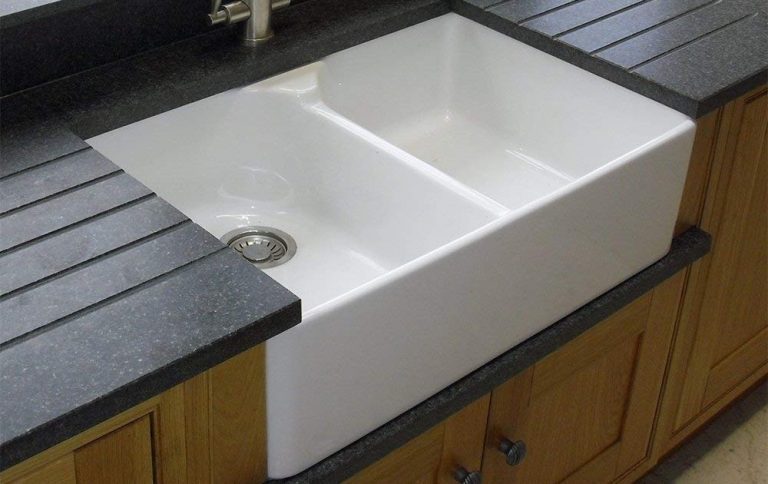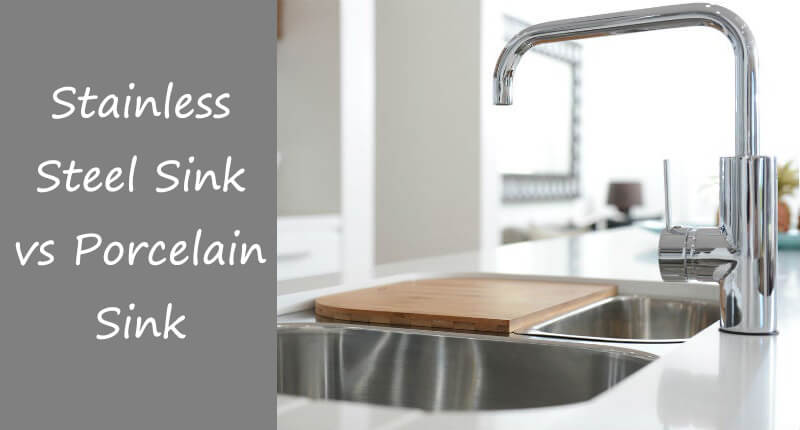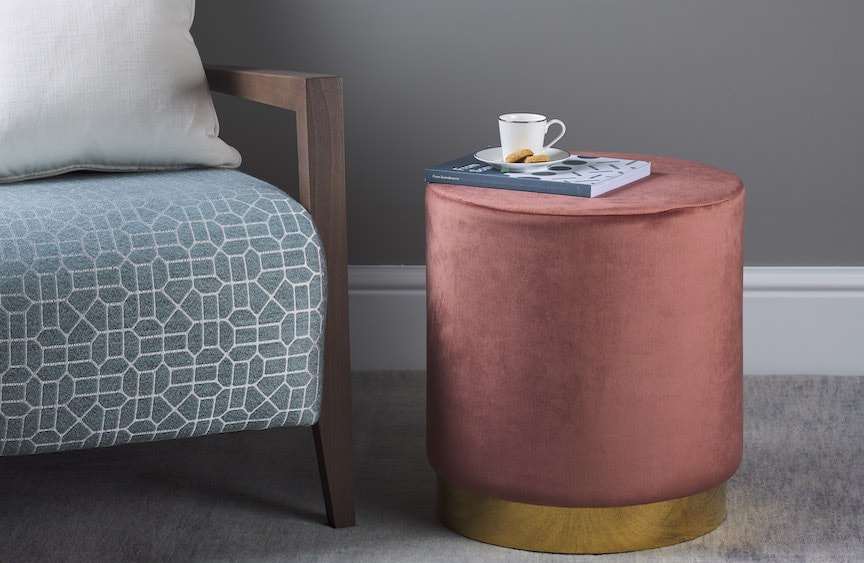When it comes to choosing the right kitchen sink, there are several factors to consider. One of the most important decisions is whether to go with a porcelain or stainless steel sink. Both materials have their own unique qualities and it can be difficult to determine which one is better. In this article, we'll take a closer look at the differences between porcelain and stainless steel sinks to help you make an informed decision for your kitchen.Porcelain vs Stainless Steel Sinks: Which One is Better?
Porcelain and stainless steel are two of the most popular materials used for kitchen sinks. Porcelain sinks are made from a mixture of clay and other materials, which is then fired at a high temperature. This creates a smooth and glossy finish that is resistant to scratches and stains. On the other hand, stainless steel sinks are made from a combination of steel, nickel, and chromium, which gives them a shiny and durable surface. One of the biggest differences between these two materials is their appearance. While porcelain sinks are available in a variety of colors and designs, stainless steel sinks are typically silver or metallic in color. This makes porcelain sinks a popular choice for homeowners who want to add a pop of color to their kitchen, while stainless steel sinks are preferred for a more modern and industrial look.Porcelain vs Stainless Steel Sinks: A Comparison
Like any other material, both porcelain and stainless steel sinks have their own advantages and disadvantages. Porcelain sinks are known for their durability and resistance to scratches, stains, and heat. They are also easy to clean and maintain, making them a popular choice for busy households. However, porcelain sinks can be prone to chipping and cracking if heavy objects are dropped on them, and they may also get discolored over time if not properly cared for. On the other hand, stainless steel sinks are highly resistant to scratches and stains, making them a practical choice for high-traffic kitchens. They are also more budget-friendly than porcelain sinks and can easily blend in with any kitchen design. However, they can be noisy and may show water spots and fingerprints more easily than porcelain sinks.Porcelain vs Stainless Steel Sinks: Pros and Cons
When it comes to durability, both porcelain and stainless steel sinks have their own strengths. Porcelain sinks are known for their ability to withstand high temperatures and heavy use without getting damaged. They are also resistant to stains and scratches, making them a top choice for busy kitchens. However, they are more prone to chipping and cracking, which can be a hassle to repair. On the other hand, stainless steel sinks are highly durable and can withstand heavy use without showing signs of wear and tear. They are also resistant to heat, stains, and scratches, making them a great option for busy households. However, they are not completely immune to dents and scratches, and may also become discolored over time.Porcelain vs Stainless Steel Sinks: Which is More Durable?
In terms of cleaning and maintenance, porcelain sinks may have a slight advantage. Their smooth and non-porous surface makes it easy to wipe away any spills or stains. They are also resistant to most cleaning products, which makes them a great option for those who prefer to use strong chemicals for cleaning. However, they may require more frequent cleaning to maintain their glossy finish. Stainless steel sinks are also easy to clean and maintain, as they have a smooth and non-porous surface that doesn't trap dirt and grime. They are also resistant to most cleaning products, but may require more frequent polishing to maintain their shiny appearance. Additionally, stainless steel sinks are more prone to water spots and fingerprints, which can be easily wiped away with a damp cloth.Porcelain vs Stainless Steel Sinks: Which is Easier to Clean?
When it comes to cost, stainless steel sinks are generally more budget-friendly than porcelain sinks. This is because porcelain sinks require more labor and materials to produce, which can drive up the cost. However, the price difference may not be significant, and may also depend on the brand and design of the sink. It's best to compare prices and features of different sinks to determine which one fits your budget and needs.Porcelain vs Stainless Steel Sinks: Which is More Affordable?
Both porcelain and stainless steel sinks have their own unique style and charm. Porcelain sinks come in a variety of colors and designs, making it easy to find one that matches your kitchen's aesthetic. They also have a more traditional and classic appeal, which can add character to any kitchen. On the other hand, stainless steel sinks have a sleek and modern look that can fit in with any kitchen design. They are also a popular choice for commercial kitchens due to their industrial and professional appearance.Porcelain vs Stainless Steel Sinks: Which is More Stylish?
When it comes to hygiene, both porcelain and stainless steel sinks are considered safe and sanitary for use in the kitchen. Porcelain sinks have a smooth and non-porous surface, which makes it difficult for bacteria and germs to thrive. However, they may require more frequent cleaning to maintain their hygiene. Stainless steel sinks are also non-porous and resistant to bacteria and germs, making them a hygienic option for any kitchen.Porcelain vs Stainless Steel Sinks: Which is More Hygienic?
Both porcelain and stainless steel sinks are known for their resistance to stains. However, porcelain sinks may have a slight advantage due to their non-porous surface. They are less likely to get stained by food, drinks, and other substances, making them a top choice for households with messy cooks. Stainless steel sinks are also resistant to stains, but may require more frequent cleaning to maintain their spotless appearance.Porcelain vs Stainless Steel Sinks: Which is More Resistant to Stains?
When it comes to sustainability, stainless steel sinks may have a slight advantage. This is because stainless steel is a recyclable material, making it a greener option compared to porcelain sinks. However, both materials can be recycled and reused to reduce waste and promote sustainability.Porcelain vs Stainless Steel Sinks: Which is More Environmentally Friendly?
Kitchen Sink: Porcelain vs Stainless

Choosing the Right Material for Your Kitchen Design
 When it comes to designing or renovating a kitchen, one of the most important decisions to make is choosing the right
kitchen sink
. Apart from its functionality, the sink plays a major role in the overall aesthetic of the kitchen. Two of the most popular materials for kitchen sinks are
porcelain
and
stainless steel
. While both have their pros and cons, it ultimately comes down to personal preference and specific needs. Let’s dive into the details and see which one comes out on top.
When it comes to designing or renovating a kitchen, one of the most important decisions to make is choosing the right
kitchen sink
. Apart from its functionality, the sink plays a major role in the overall aesthetic of the kitchen. Two of the most popular materials for kitchen sinks are
porcelain
and
stainless steel
. While both have their pros and cons, it ultimately comes down to personal preference and specific needs. Let’s dive into the details and see which one comes out on top.
Porcelain Sinks
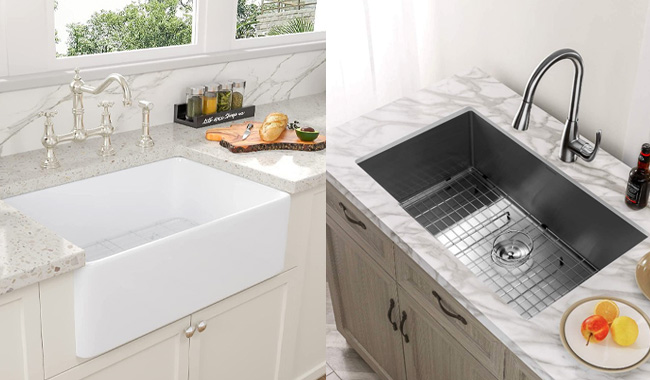 Porcelain sinks
have been a classic choice for decades. They are made from a combination of clay and other minerals, and are then fired at high temperatures to create a hard and durable surface. The main advantage of porcelain sinks is their
timeless and elegant
look. They come in a variety of colors and designs, making it easy to match with any kitchen style.
White porcelain sinks
are particularly popular as they give a clean and sophisticated look to the kitchen.
However, porcelain sinks are known to be
less durable
compared to stainless steel. They are prone to chipping and scratching, especially if heavy pots and pans are dropped in them. The surface is also
more porous
than stainless steel, making it susceptible to stains and discoloration over time. Regular cleaning with non-abrasive cleaners is recommended to maintain its beauty.
Porcelain sinks
have been a classic choice for decades. They are made from a combination of clay and other minerals, and are then fired at high temperatures to create a hard and durable surface. The main advantage of porcelain sinks is their
timeless and elegant
look. They come in a variety of colors and designs, making it easy to match with any kitchen style.
White porcelain sinks
are particularly popular as they give a clean and sophisticated look to the kitchen.
However, porcelain sinks are known to be
less durable
compared to stainless steel. They are prone to chipping and scratching, especially if heavy pots and pans are dropped in them. The surface is also
more porous
than stainless steel, making it susceptible to stains and discoloration over time. Regular cleaning with non-abrasive cleaners is recommended to maintain its beauty.
Stainless Steel Sinks
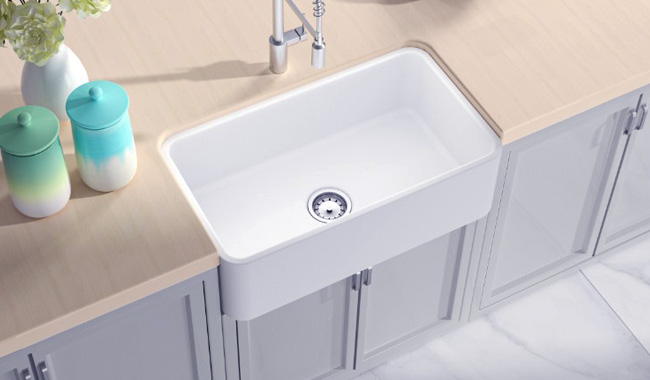 On the other hand,
stainless steel sinks
have gained popularity in recent years for their sleek and modern look. They are made from a combination of steel, nickel, and chromium, making them
extremely durable
and resistant to chipping and scratching. They also have a
non-porous surface
, making them easy to clean and maintain.
Stainless steel sinks come in a variety of finishes, from shiny to matte, allowing for
versatility in design
. They are also
affordable
and can fit into any budget. However, some people may find that stainless steel sinks can be
noisy
when washing dishes, and water spots can be more visible on the surface. Investing in a higher quality gauge of stainless steel can help reduce noise and prevent water spots.
On the other hand,
stainless steel sinks
have gained popularity in recent years for their sleek and modern look. They are made from a combination of steel, nickel, and chromium, making them
extremely durable
and resistant to chipping and scratching. They also have a
non-porous surface
, making them easy to clean and maintain.
Stainless steel sinks come in a variety of finishes, from shiny to matte, allowing for
versatility in design
. They are also
affordable
and can fit into any budget. However, some people may find that stainless steel sinks can be
noisy
when washing dishes, and water spots can be more visible on the surface. Investing in a higher quality gauge of stainless steel can help reduce noise and prevent water spots.
Conclusion
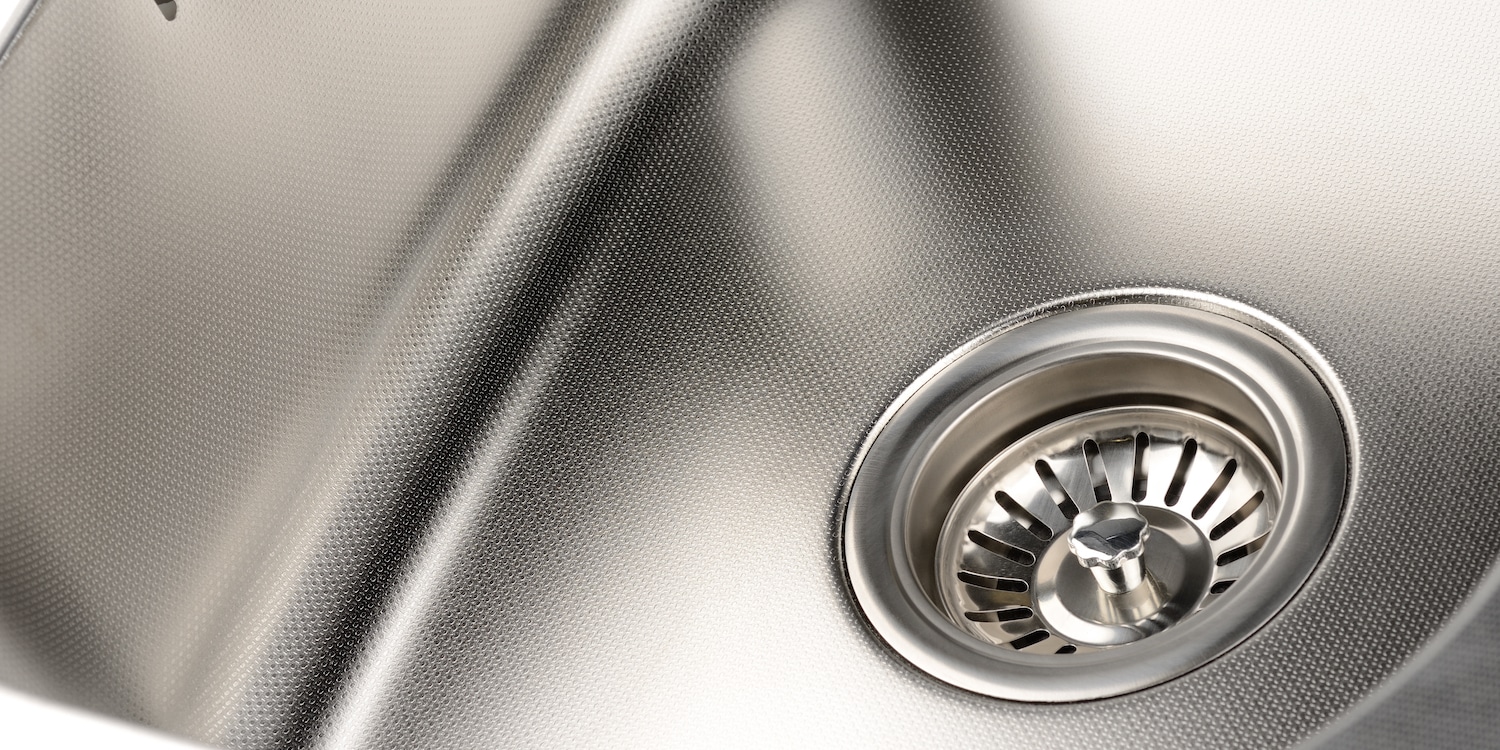 In the end, the decision between porcelain and stainless steel comes down to personal preference and needs. If you want a classic and elegant look, porcelain is a great choice. However, if durability and functionality are your top priorities, then stainless steel is the way to go. Whichever material you choose, make sure to consider your budget and the overall design of your kitchen to ensure a cohesive and beautiful look.
In the end, the decision between porcelain and stainless steel comes down to personal preference and needs. If you want a classic and elegant look, porcelain is a great choice. However, if durability and functionality are your top priorities, then stainless steel is the way to go. Whichever material you choose, make sure to consider your budget and the overall design of your kitchen to ensure a cohesive and beautiful look.
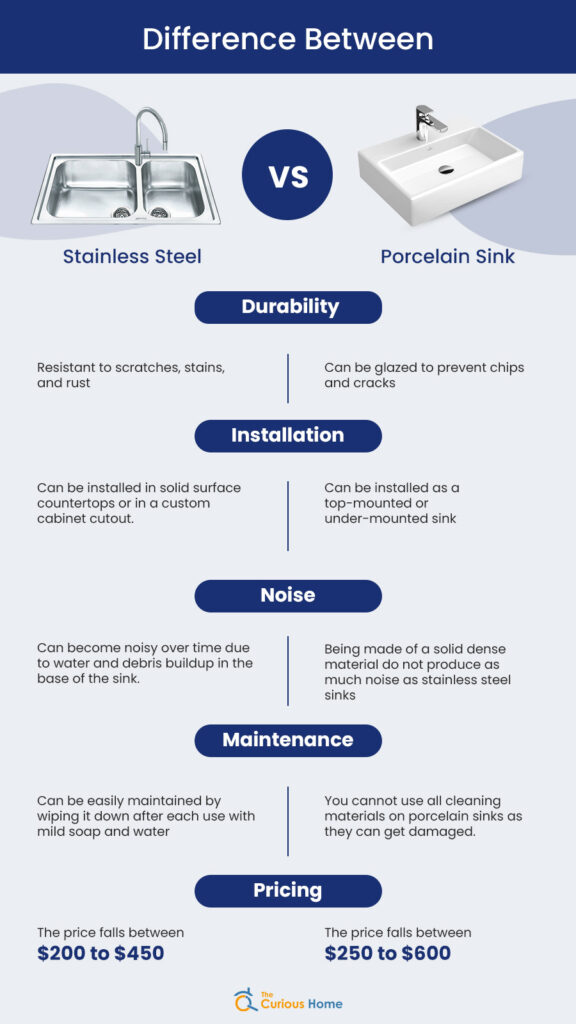



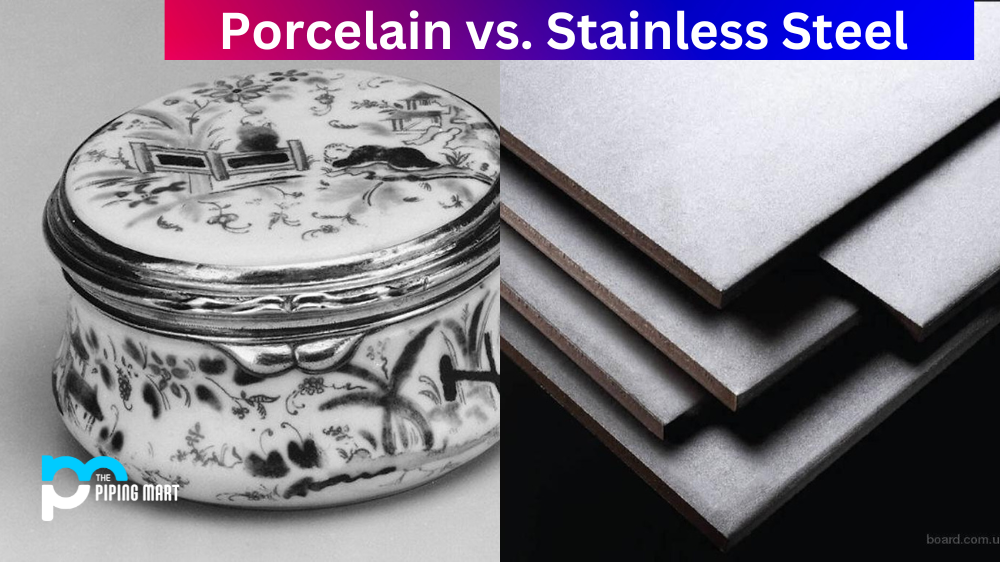




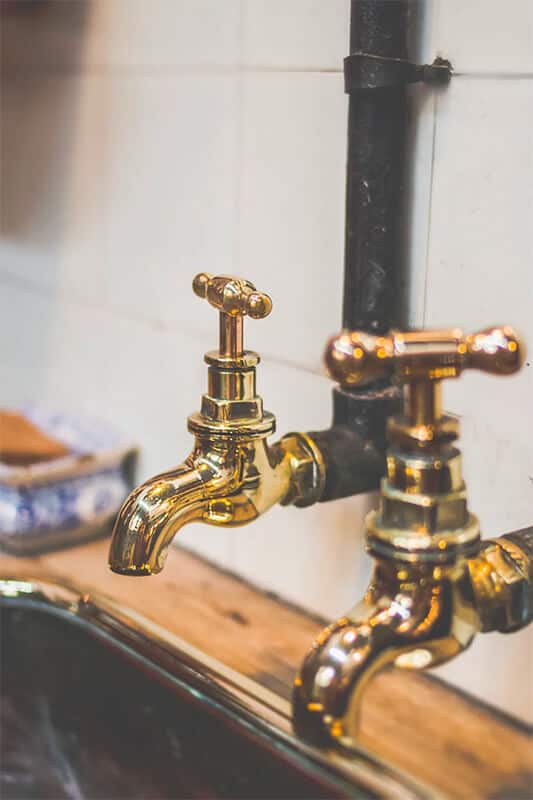

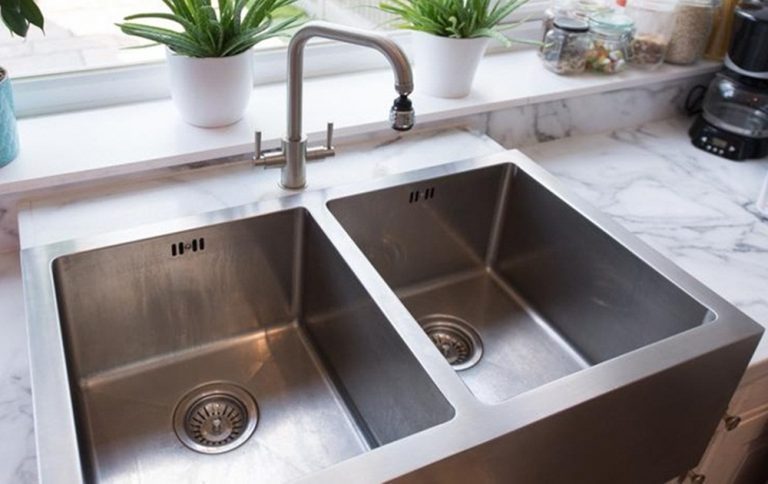










:max_bytes(150000):strip_icc()/white-farmhouse-sink-kitchen-65cc711e800c4c6e842207f31fda688e.jpg)

